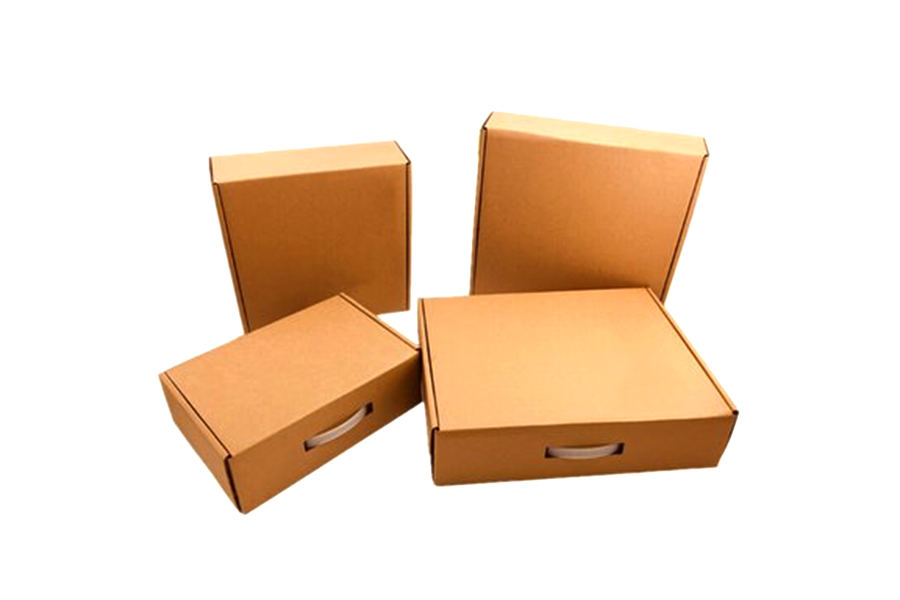Corrugated Boxes Guide: Types, Styles, Measurements & Recycling
Sep 02, 2025
1. Introduction to Corrugated Boxes
Corrugated boxes are made from corrugated fiberboard — a material consisting of one or more fluted paper layers sandwiched between linerboards. This unique structure makes them stronger than regular cardboard, while still being lightweight and cost-effective.
Why they’re popular:
Durability – Protects products during shipping and handling.
Versatility – Suitable for various industries, from electronics to food.
Sustainability – Most corrugated boxes are highly recyclable.
Understanding the right corrugated box types and styles is key to selecting optimal packaging for your business.
2. Corrugated Box Types
Corrugated boxes are classified based on the number of walls and flutes used. Each corrugated box type serves a different purpose:
2.1 Single-Wall Corrugated Boxes
Structure: One layer of fluted paper between two liners.
Best for: Lightweight to medium-weight products.
Applications: E-commerce packaging, retail boxes, and small electronics.
2.2 Double-Wall Corrugated Boxes
Structure: Two layers of fluting and three linerboards.
Best for: Heavier or fragile products requiring extra protection.
Applications: Industrial tools, kitchen appliances, furniture parts.
2.3 Triple-Wall Corrugated Boxes
Structure: Three layers of fluting with four linerboards.
Best for: Heavy-duty shipping and bulk storage.
Applications: Automotive parts, industrial machinery, export packaging.
Pro tip: The stronger the wall type, the higher the stacking strength and impact resistance.

3. Corrugated Box Styles
Different products require different corrugated box styles, depending on shape, size, and handling needs. Here are the most common options:
3.1 Regular Slotted Container (RSC)
Features: Flaps of equal length; most cost-effective and widely used.
Best for: General-purpose packaging.
Advantages: Easy to assemble, minimal waste, fits most shipping needs.
3.2 Half-Slotted Container (HSC)
Features: Similar to RSC but with only one set of flaps.
Best for: Items requiring a cover or open-top access.
Applications: Displays, retail packaging, quick-access storage.
3.3 Full Overlap Box (FOL)
Features: Flaps fully overlap for added strength.
Best for: Heavy products requiring additional protection.
Applications: Bulk liquids, fragile items, long-distance shipping.
3.4 Die-Cut Boxes
Features: Custom-shaped boxes made with precision cutting.
Best for: Premium packaging and branding.
Applications: Gift boxes, subscription boxes, custom retail packaging.
Choosing the right corrugated box style depends on your product’s fragility, weight, and marketing needs.
4. Corrugated Box Measurements
Accurate corrugated box measurements are critical for product safety, shipping efficiency, and cost control. Measurements are usually expressed as:
4.1 Internal Dimensions
Definition: The usable space inside the box.
Importance: Ensures a snug fit for products, reducing damage during transit.
4.2 External Dimensions
Definition: Total outside size of the box.
Importance: Essential for shipping calculations and pallet optimization.
4.3 Measuring Guidelines
Always measure length × width × depth in inches or millimeters.
For irregularly shaped products, leave enough clearance for cushioning.
Consider the corrugated box type and wall thickness when determining usable space.
Correct corrugated box measurements help businesses minimize material costs, optimize storage, and reduce shipping fees.
5. Recyclability and Sustainability
One of the biggest advantages of corrugated packaging is its recyclability. Most corrugated boxes are made from 70–100% recycled fiber and can be recycled multiple times without losing strength.
5.1 How Corrugated Boxes Are Recycled
Collected and sorted at recycling facilities.
Broken down into pulp using water and chemicals.
Pressed, dried, and converted into new linerboards and flutes.
5.2 Factors Affecting Recyclability
Printing & Coatings: Water-based inks are more eco-friendly than glossy coatings.
Corrugated Box Types: Single-wall and double-wall boxes are easier to recycle than laminated multi-material packaging.
Contamination: Oil, food residue, and tape can reduce recyclability.
5.3 Sustainable Packaging Trends
Increasing use of biodegradable coatings.
Shift towards lightweight corrugated box styles to reduce material waste.
Growth of closed-loop recycling systems within supply chains.
6. Choosing the Right Corrugated Box
When selecting the best packaging, businesses should balance corrugated box types, styles, measurements, and recyclability:
| Criteria | Recommendation |
| Recommendation | Choose single, double, or triple-wall based on load. |
| Packaging Style | Match the box style to the product’s fragility and presentation needs. |
| Shipping Efficiency | Optimize corrugated box measurements to reduce dimensional weight costs. |
| Environmental Impact | Select boxes with high recyclability to support sustainability goals. |
7. Conclusion
Corrugated boxes remain an essential part of modern packaging. By understanding different corrugated box types, selecting the right styles, ensuring accurate measurements, and considering recyclability, businesses can enhance product protection, lower costs, and reduce environmental impact.
As e-commerce and global logistics continue to grow, corrugated packaging will only become more innovative — offering smarter, greener, and more efficient solutions.




 English
English  русский
русский  Français
Français  Español
Español  عربى
عربى 

